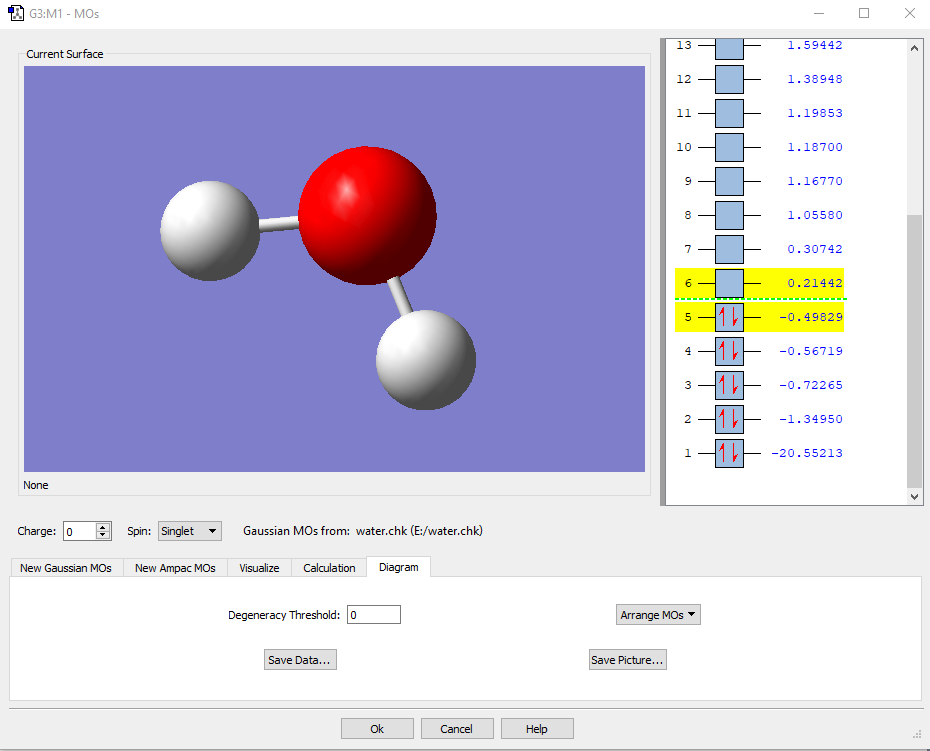A diagram of molecular orbitals for $\ce{H2O}$ would be as follows:
The above diagram has been constructed qualitatively following the steps that I have been instructed in various classes on this bonding theory.
Nevertheless, I have seen that the Guassian software allows to visualize the molecular orbitals of a species. For example, for the case of water one obtains:
The computational results agree with the qualitative diagram data, since all electrons are paired and there are also five atomic orbitals.
What I do not know is how to obtain the energy of the orbitals of the oxygen atom and the two hydrogen atoms. On the other hand, I would not know how to construct the diagram either, that is, I would not know that molecular orbital 5, the LUMO, comes only from the 2p orbital of the oxygen.



